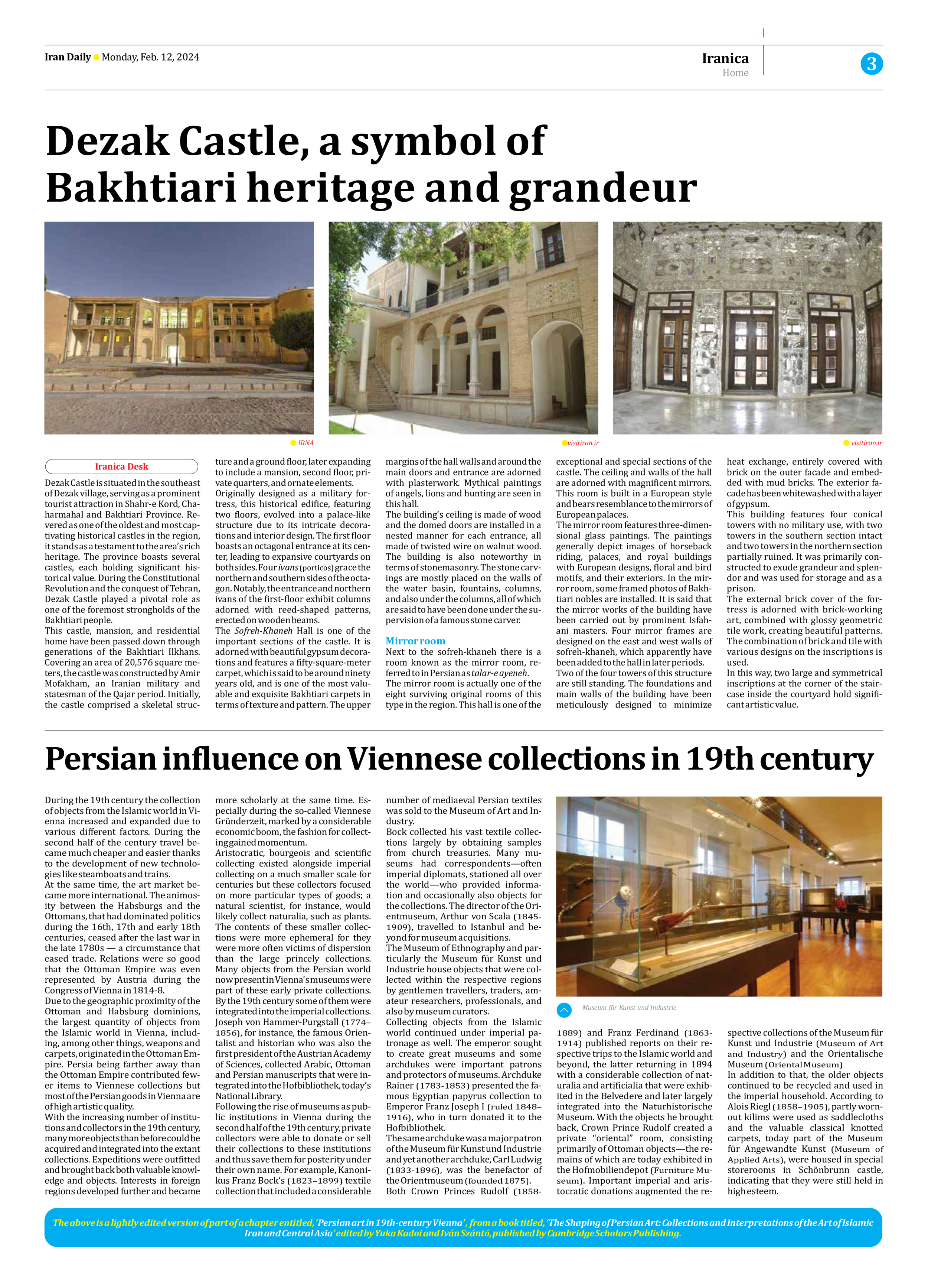
Persian influence on Viennese collections in 19th century
During the 19th century the collection of objects from the Islamic world in Vienna increased and expanded due to various different factors. During the second half of the century travel became much cheaper and easier thanks to the development of new technologies like steamboats and trains.
At the same time, the art market became more international. The animosity between the Habsburgs and the Ottomans, that had dominated politics during the 16th, 17th and early 18th centuries, ceased after the last war in the late 1780s — a circumstance that eased trade. Relations were so good that the Ottoman Empire was even represented by Austria during the Congress of Vienna in 1814-8.
Due to the geographic proximity of the Ottoman and Habsburg dominions, the largest quantity of objects from the Islamic world in Vienna, including, among other things, weapons and carpets, originated in the Ottoman Empire. Persia being farther away than the Ottoman Empire contributed fewer items to Viennese collections but most of the Persian goods in Vienna are of high artistic quality.
With the increasing number of institutions and collectors in the 19th century, many more objects than before could be acquired and integrated into the extant collections. Expeditions were outfitted and brought back both valuable knowledge and objects. Interests in foreign regions developed further and became more scholarly at the same time. Especially during the so-called Viennese Gründerzeit, marked by a considerable economic boom, the fashion for collecting gained momentum.
Aristocratic, bourgeois and scientific collecting existed alongside imperial collecting on a much smaller scale for centuries but these collectors focused on more particular types of goods; a natural scientist, for instance, would likely collect naturalia, such as plants. The contents of these smaller collections were more ephemeral for they were more often victims of dispersion than the large princely collections. Many objects from the Persian world now present in Vienna’s museums were part of these early private collections. By the 19th century some of them were integrated into the imperial collections. Joseph von Hammer-Purgstall (1774–1856), for instance, the famous Orientalist and historian who was also the first president of the Austrian Academy of Sciences, collected Arabic, Ottoman and Persian manuscripts that were integrated into the Hofbibliothek, today’s National Library.
Following the rise of museums as public institutions in Vienna during the second half of the 19th century, private collectors were able to donate or sell their collections to these institutions and thus save them for posterity under their own name. For example, Kanonikus Franz Bock’s (1823–1899) textile collection that included a considerable number of mediaeval Persian textiles was sold to the Museum of Art and Industry.
Bock collected his vast textile collections largely by obtaining samples from church treasuries. Many museums had correspondents—often imperial diplomats, stationed all over the world—who provided information and occasionally also objects for the collections. The director of the Orientmuseum, Arthur von Scala (1845-1909), travelled to Istanbul and beyond for museum acquisitions.
The Museum of Ethnography and particularly the Museum für Kunst und Industrie house objects that were collected within the respective regions by gentlemen travellers, traders, amateur researchers, professionals, and also by museum curators.
Collecting objects from the Islamic world continued under imperial patronage as well. The emperor sought to create great museums and some archdukes were important patrons and protectors of museums. Archduke Rainer (1783-1853) presented the famous Egyptian papyrus collection to Emperor Franz Joseph I (ruled 1848–1916), who in turn donated it to the Hofbibliothek.
The same archduke was a major patron of the Museum für Kunst und Industrie and yet another archduke, Carl Ludwig (1833-1896), was the benefactor of the Orientmuseum (founded 1875).
Both Crown Princes Rudolf (1858-1889) and Franz Ferdinand (1863-1914) published reports on their respective trips to the Islamic world and beyond, the latter returning in 1894 with a considerable collection of naturalia and artificialia that were exhibited in the Belvedere and later largely integrated into the Naturhistorische Museum. With the objects he brought back, Crown Prince Rudolf created a private “oriental” room, consisting primarily of Ottoman objects—the remains of which are today exhibited in the Hofmobiliendepot (Furniture Museum). Important imperial and aristocratic donations augmented the respective collections of the Museum für Kunst und Industrie (Museum of Art and Industry) and the Orientalische Museum (Oriental Museum)
In addition to that, the older objects continued to be recycled and used in the imperial household. According to Alois Riegl (1858–1905), partly worn-out kilims were used as saddlecloths and the valuable classical knotted carpets, today part of the Museum für Angewandte Kunst (Museum of Applied Arts), were housed in special storerooms in Schönbrunn castle, indicating that they were still held in high esteem.
The above is a lightly edited version of part of a chapter entitled, ‘Persian art in 19th-century Vienna’ , from a book titled, ‘The Shaping of Persian Art: Collections and Interpretations of the Art of Islamic Iran and Central Asia’ edited by Yuka Kadoi and Iván Szántó, published by Cambridge Scholars Publishing.







